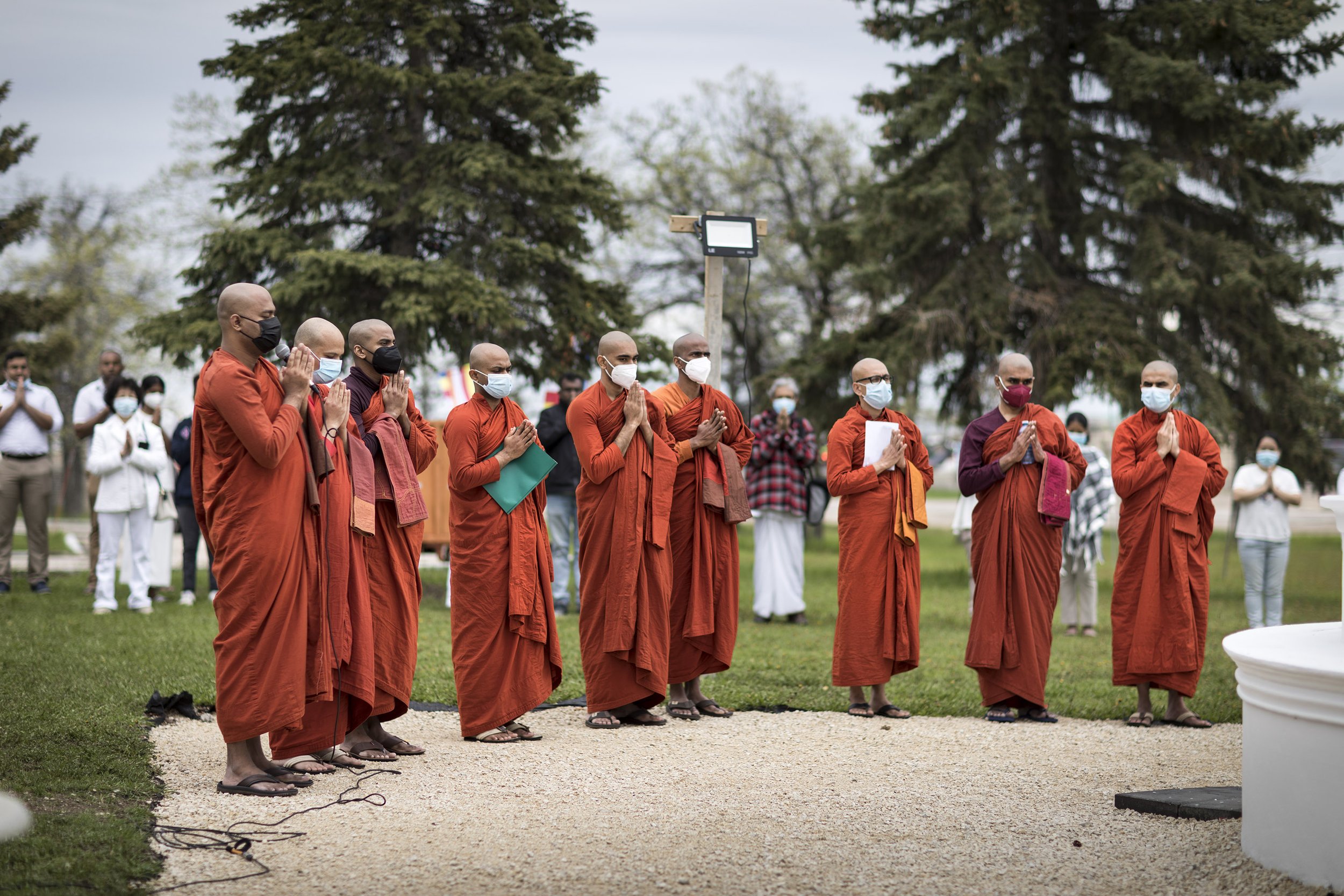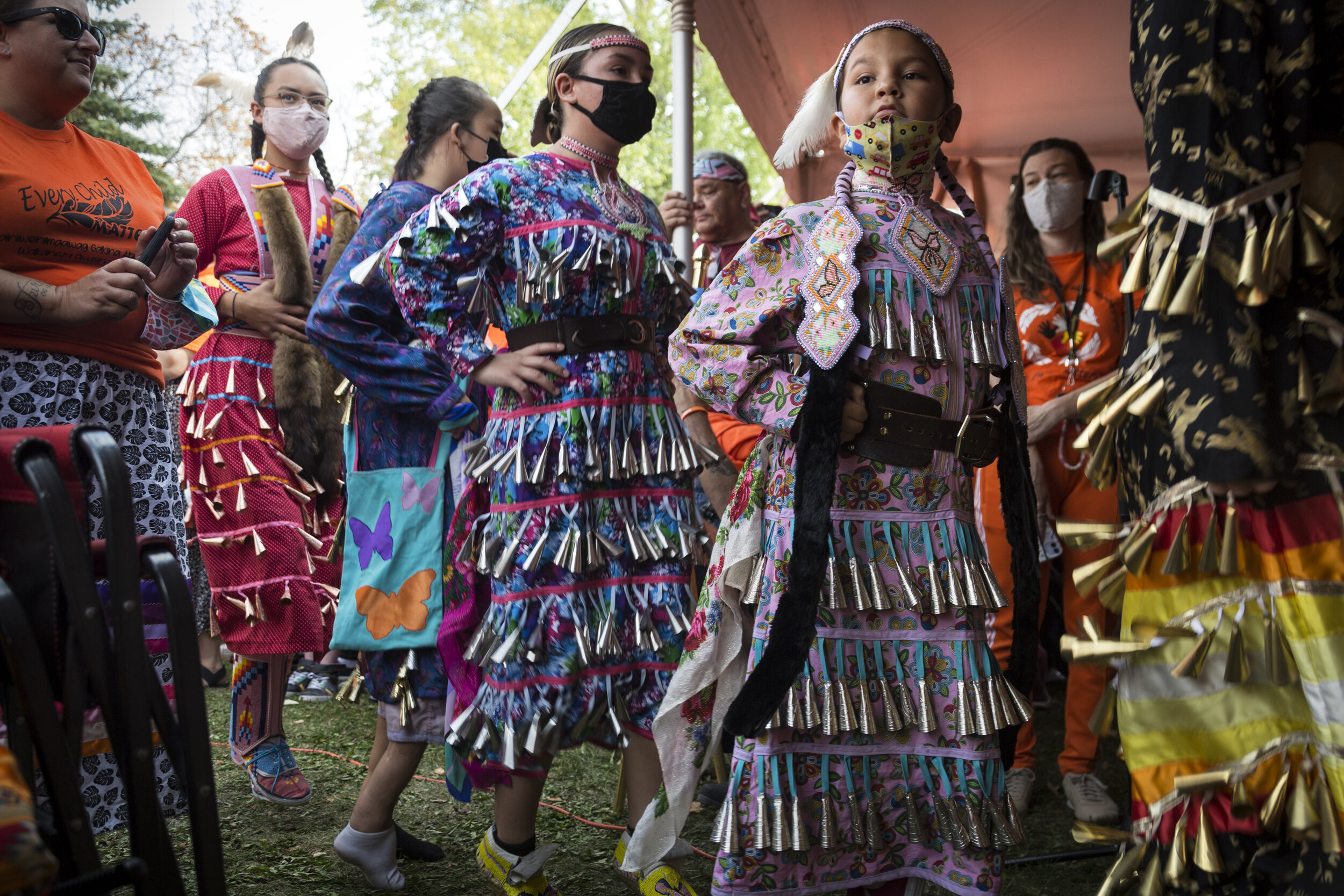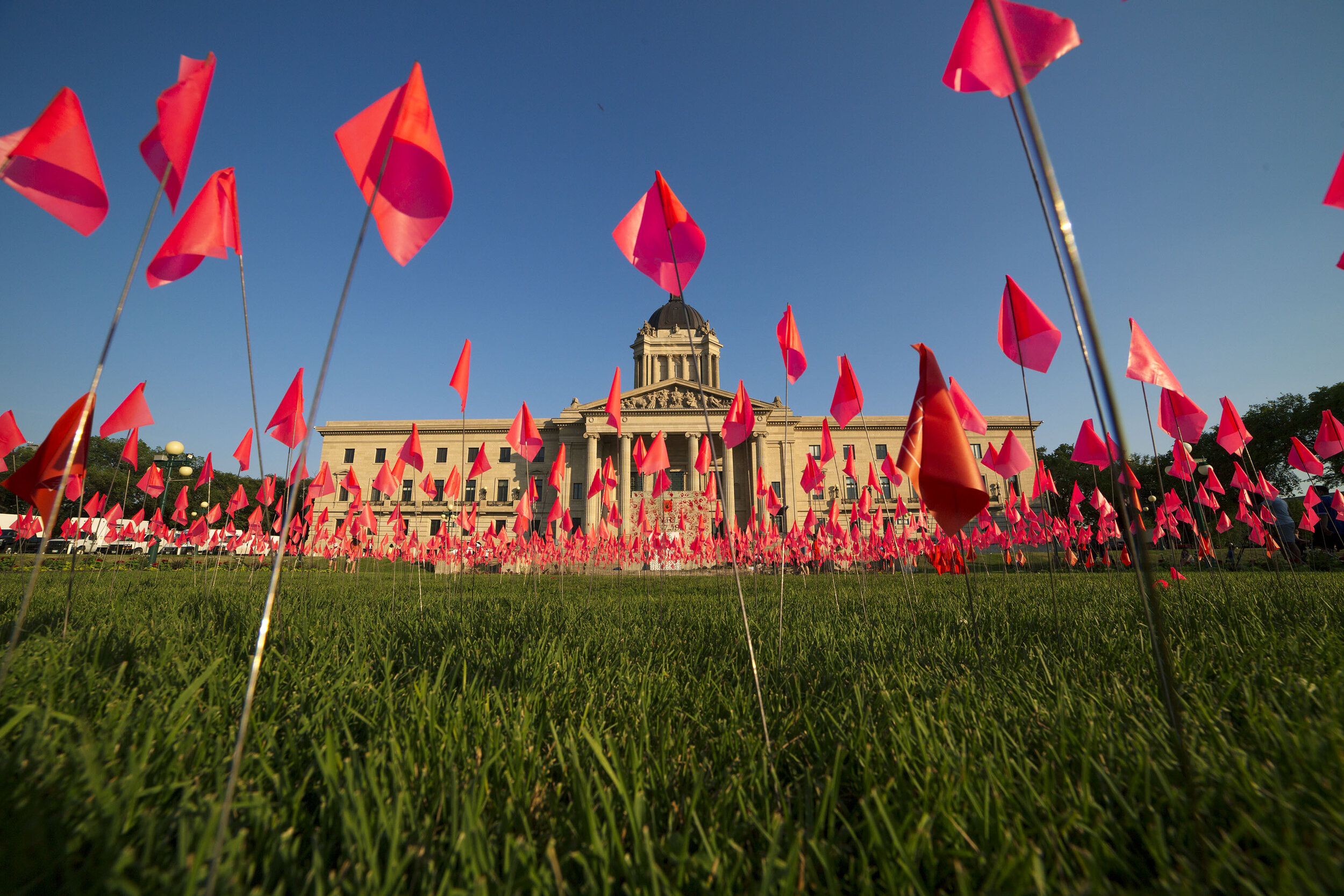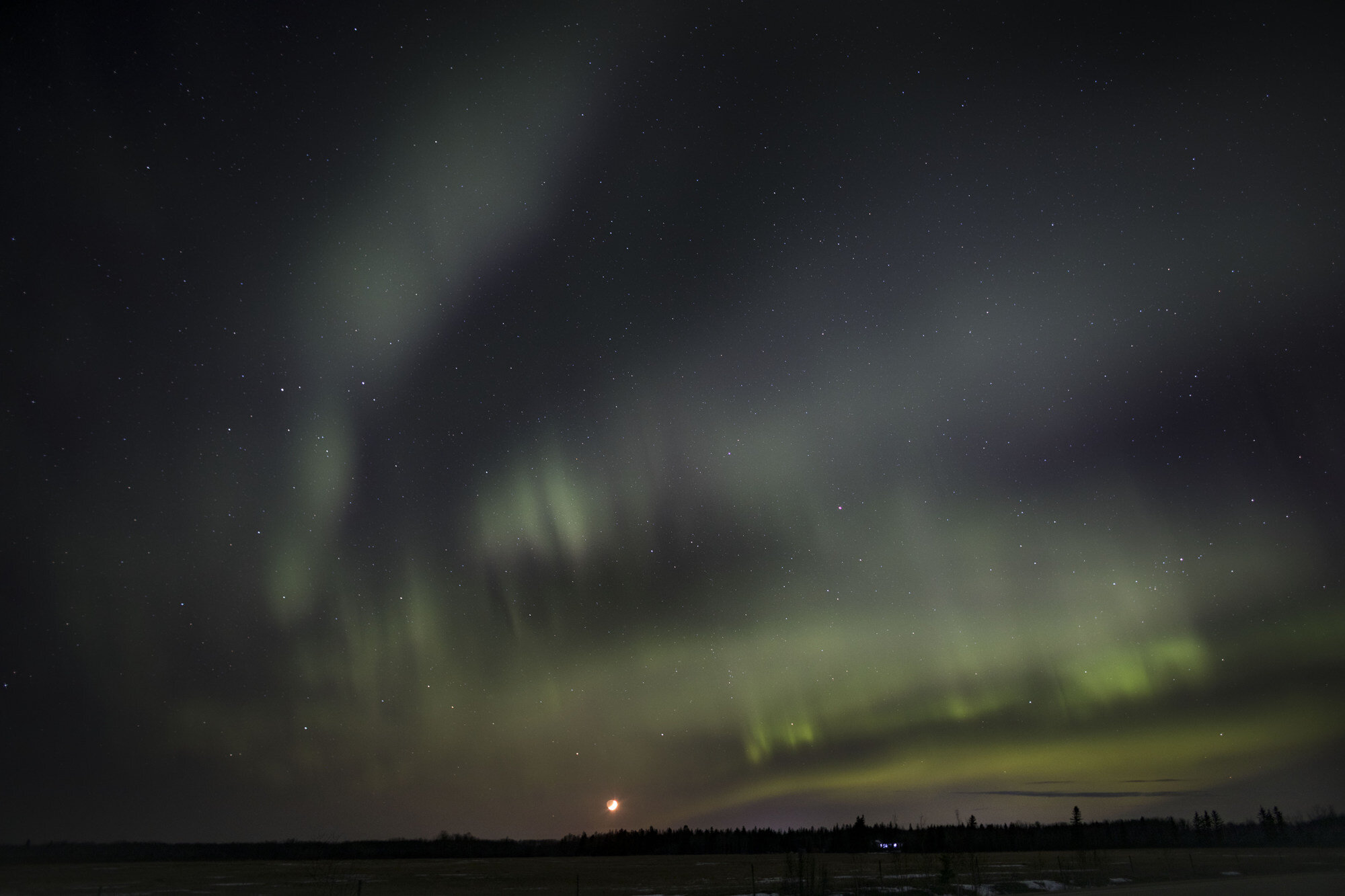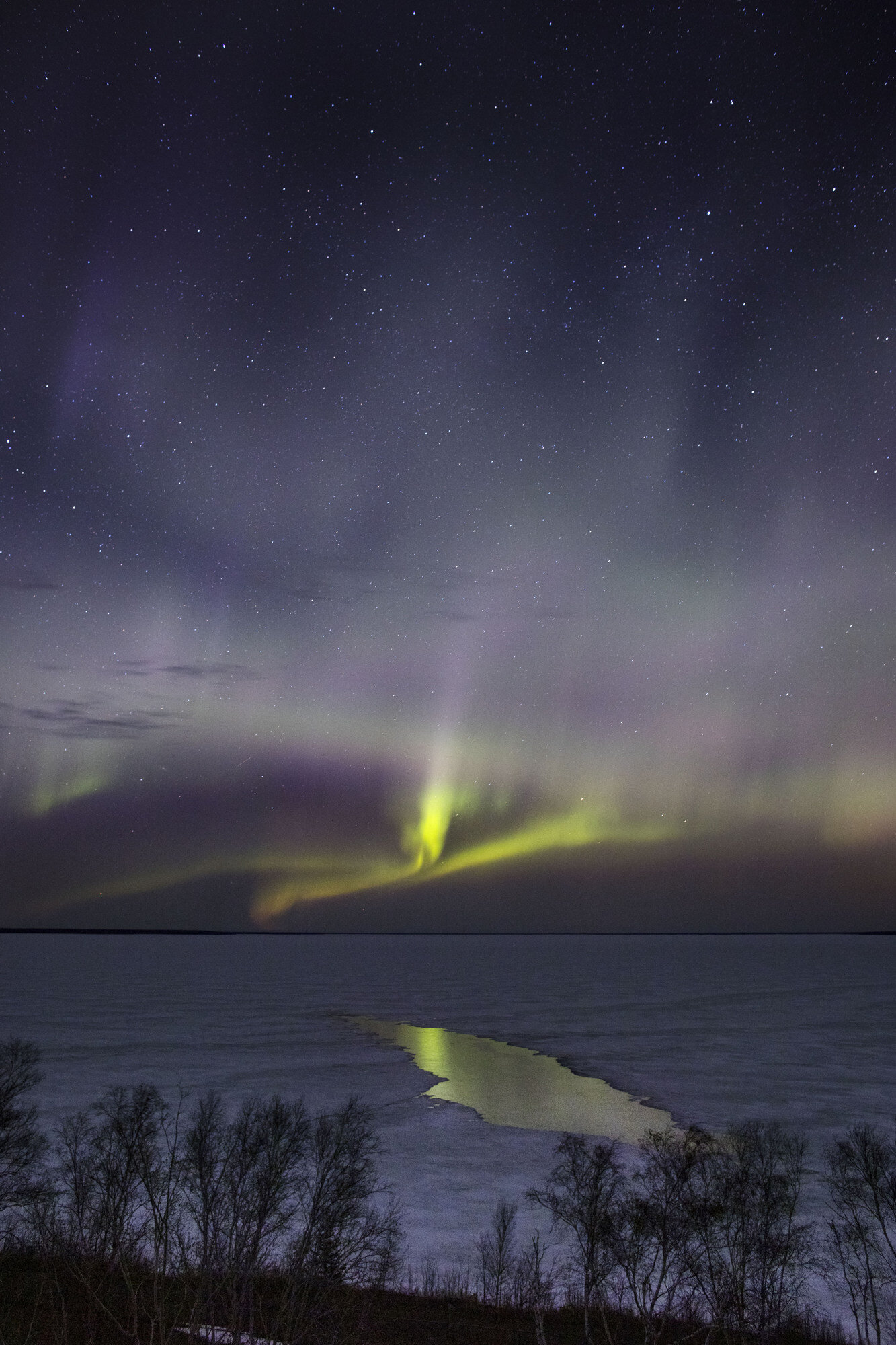Earlier this week was Orange Shirt Day which is a very visible part of Canada’s National Day for Truth and Reconciliation. In a city whose past and present is heavily comprised of First Nations people, it’s a big occasion and that was shown most visibly with a procession throughout the city’s downtown.
Organized by the Wa Say Healing Centre this year was the 4th annual march, and coincidentally the first year the day is a statutory holiday in the province of Manitoba (it’s been a federal holiday since its inception in 2020).
I’ve gone out to photograph this event every year. For me, I experience things more deeply when I engage my passion for photography and tell stories with my cameras. We all have our own ways of paying respects to a day like September 30 — this is what I feel is my best way.
A boy waves a huge flag reading Every Child Matters at Winnipeg’s famous Portage & Main intersection while awaiting the start of the 4th annual Healing Walk, September 30th.
A woman quietly sings and plays a drum as thousands of people walk by on Portage Avenue during a Healing Walk on Orange Shirt Day.
Purple and orange at Portage and Main, during the 4th annual Healing Walk on the National Day for Truth and Reconciliation in Winnipeg.
A couple greets with smiles and waves amid a sea of orange shirts at Portage & Main, with the future Metis Centre in the background.
Thunder the horse, led by Cora Morgan, attracts a shy smile from a girl walking alongside, Monday afternoon during the 4th annual Wa Say Healing Walk in downtown Winnipeg.
A small goat joins Thunder the horse on a procession on Portage Avenue, Monday afternoon. A crowd of thousands made their way from the historic Forks Market through the downtown to a powwow to mark Canada’s National Day for Truth and Reconciliation.















































